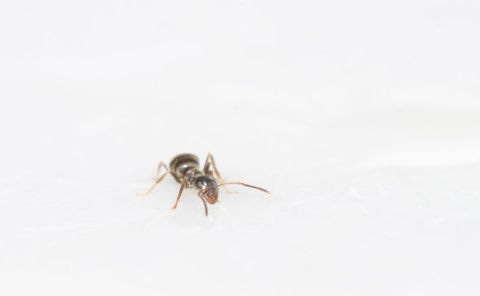1 Week, 7 Stories #58
The Beta kids are here, and the road ahead for them is full of challenges.
Every edition features 7 stories from the past week. I’ll draw on my background in media, journalism, agriculture, biotech, and renewable energy to come up with an interesting selection and to offer some context.
(On a scheduling note, there will not be a newsletter next week. The next edition will be January 25th)
Canada’s first babies born in 2025 entered the year minutes after midnight on News Year’s Eve and ushered in a new generation. Welcome Generation Beta kids.
First off, the assigning of a generational name and date is not a scientific or sharply defined practice, and there is certainly no policy associated with the generational shorthand. That doesn’t make it a useless point for discussion because as the Pew Research Centre points out it is one way to frame the challenges and opportunities for the young and the old. The downside being that we can oversimplify those discussions with stereotypes that lose sight of change.
The first generation given a handle of its own was the Silent Generation born between 1928 and 1945 and since then we have been through the Baby Boomers, Gen X, Millennials or Generation Y, Gen Z, Generation Alpha, and now Generation Beta which will include new additions up until about 2039.
While we have no “generation naming authority” there have been some influential analysts, writers, and demographers. A book called Generations by William Strauss and Neil Howe first opened that generational door in 1991. That same year, Canadian Douglas Coupland wrote a novel which popularized Generation X. In 2021, thirty years after the book was published, The Guardian caught up with Coupland who admitted he never liked being called a baby boomer and his novel was a way to invent his way out of it. Australia-based Mark McCrindle and McCrindle research coined the term Generation Alpha and says that the new generation will make up 16% of the global population by 2035.
As we wrestle with all the opportunities and challenges that artificial intelligence is throwing at us every day, keep in mind that the first Beta baby born in New South Wales and all those that follow her will go beyond being digital natives – they will never have known a world without AI.
Which leads to another AI story which these newborns will never read and therefore may never have learn a much-needed lesson.
Apple’s AI-generated news alerts said that Luke Littler had won the PDC World Darts Championship before it had even taken place and that tennis star Rafa Nadal had come out as gay. The two false stories were based on BBC stories and sent to the BBC News app.
This is not the first bug in the Apple works and even though the BBC raised the issue in December, Apple did not respond until this week and said it is working to clarify that the summaries were AI-generated. Somewhat hypocritical of Apple to push the British introduction of its new AI-powered featured in early December and by January using the same technology seemingly as an excuse for the mistakes. As Computerworld notes, Apple appears to be saying that these summaries are done by AI and therefore could contain machine-generated errors. Hardly a selling point for a product that Vox described as “magically mediocre” when they tested it in September.
Alan Rusbridger, the former editor of The Guardian said the product should be pulled from use because it is “clearly not ready”. BBC complained earlier that Apple’s AI summary said BBC had published an article claiming Luigi Mangione, the man arrested following the murder of healthcare insurance CEO Brian Thompson in New York, had shot himself. Another little oops from Apple. Perhaps Isaac Asimov’s novel, I,Robot had a point when it suggested that robot were more human than mankind!
Judging by what TechCrunch said about the problem, Meta and Apple are as focused on labelling AI generated content as they are on ensuring that it works.
Those Beta kids who will start reading AI generated content in 6 years or so will never know what hit them.
‘Tis the season for New Year’s resolutions, back to school, and for getting sick. Just about everywhere. Top among what’s ailing us this January is the flu and RSV (Respiratory syncytial virus). It is winter and many people assume that as we get cold, we catch a cold. Not so. Both the flu and RSV are caused by viruses. When it gets cold, we spend more time inside in close contact with other people and over the holidays we tend to up our close contact time. It may appear that cold is the problem, but there is no direct link.
In Alberta the holiday sick-giving season pushed some hospitals to over capacity for children and Winnipeg is experiencing a surge in emergency room visits for respiratory virus related problems. In the United States, the Centers for Disease Control and Prevention says New Hampshire is one of 11 states classified as having a “very high” level of respiratory illnesses. The state has had two flu-related deaths this winter. In Europe, flu cases are up sharply with France and Spain getting the worst of it.
While we are by no means headed into pandemic territory there are enough hotspots to remind us that the decline in vaccination rates does have consequences. For instance, as 2024 was closing out Medical News in Brief said that cases of measles around the world rose by 20% over the previous year and pointed to a drop in vaccine coverage as the culprit.
Not too late to get the jab!
As COIVD-19 was on the rise, wastewater surveillance for the virus became more common and proved to be an effective tool. By analyzing wastewater samples for specific pathogens researchers and public health officials can track the prevalence of potentially harmful disease before patients have begun to show clinical symptoms.
Now, Alberta researchers are on the hunt for the latest disease needing some early detection measure in place.
H5N1 often referred to as avian influenza.
H5N1 takes its toll on wild and domestic birds but has now been found in U.S. dairy cattle and has spread to a small number of people. From the perspective of the pan-Alberta wastewater network monitoring waste from Alberta livestock makes a lot of sense to stay a ahead of the spread. As one of the team leads said in this CBC story, when it comes to H5N1 “we've been worried about an impending pandemic threat for some time. It could happen any day, and being prepared is really important". By monitoring the wastewater on farms and feedlots, early detection of H5N1 can help us identify potential hotspots
The Public Health Agency of Canada is working with a variety of government levels and department and academic institutions to establish a pan-Canadian program to deal with potential public health threats whether it is communicable diseases, potential antimicrobial resistant organisms, or even illicit drug use.
It may not be the most pleasant job to collect wastewater samples, but as the old saying goes, “someone has to do it”.

We love our highways. Highways to get us out for a quick getaway, highways that are tricky to navigate in bad weather, and highways like Toronto’s 401 or the I-5 in Los Angeles to make drivers wish they had stayed at home.
Millions of years ago, Jurassic dinosaurs had their own kind of highway and likely encountered their own kind of road rage. One of those reptilian highways has been discovered in a quarry in the United Kingdom. We may not have much physical evidence of the actual dinosaurs that made the tracks but an article from the UK’s Natural History Museum says that the fossilized tracks give clues to behaviour. A BBC story from last week calls it the “biggest ever” dinosaur trackway found in the UK.
Canada has its own share of dino highways and byways. The UK find featured about 200 ancient tracks, but in 2022 an international team of paleontologists documented more than 100 footprints on the banks of the Red Willow river near Grande Prairie, Alberta. British Columbia has its own “dinosaur autobahn” which dates back 100 million years.
Dinosaur tracks are generally found where there was plenty of mud and silt present to leave deep impressions. Unlike the typical impression you might leave as you walk through mud; dinosaur tracks are found because they had quickly filled in sand and small pebbles. Over time these become compressed and leave a cast of the original print. It could also be the case that the muddy area where the prints were left dried out in under increasingly hot and dry conditions. These unique conditions that overcome time and human development are why large tracked areas such as the recent one in the UK or the one in Alberta are uncommon and get special attention.
Ambitions of fighting climate change through special funding, expensive initiatives, tax incentives (negative and positive), and corporate action are experiencing rough times.
The Net-Zero Banking Alliance is the latest example of how shaky climate action structures can be. The United Nations-led initiative was launched in 2021 and is made up of banks from 44 countries. Using their collective investment capital and influence, the commitment was net-zero greenhouse gas emissions from the member’s lending and investing portfolios.
While the group says that remains the goal, many company’s are jumping off the bandwagon. Major institutions such as Citigroup, Goldman Sachs, Wells Fargo, Bank of America, Morgan Stanley, and JP Morgan Chase have left the group. Not surprisingly, they have all left since the “drill, baby, drill” Donald Trump was elected. Now Canada’s RBC and BMO are ready to leave the group according to some media reports.
With control of the US Executive, Senate, and House, Republicans are applying pressure on the sector to walk back their plans.
Depending on what you read and who is the pundit of the day, either this latest development could be a good PR move to stay in the good graces of the incoming administration, or the original group commitment was weak or hypocritical.
Another case of wait and see what happens to the best of intentions.
While we are enjoying a Chinook and unseasonable warm weather in Calgary this week, it is not quite nice enough for a picnic. By the time summer rolls around, however, you might want to keep this story in mind. Ants can hold a grudge. Evolutionary biologists from the University of Freiburg found that ants learn from experience. They remember aggression and odours. When they don’t like what they remember they will “open their mandibles and bite” or kill their competitors by spraying acid. The authors of the paper in the open access journal Current Biology point out that some form of recognition is important for the cell level to the societal level. Habits or automatic response are part of that behaviour, but social insects such as the ants in the study also rely on “associative learning” to protect themselves.
Ants have long been known as social creatures and this new research illustrates how well developed their societies really are.
The acid spray by the way, is formic acid and it isn’t pleasant stuff according to MIT.
Read, comment, subscribe, and share this newsletter.
I’m available for contract and freelance work with not-for-profits and charities. With 40 years of experience behind me and lots of time ahead of me, I’m here to help you make a difference in your media relations, public relations, and general communications needs.



